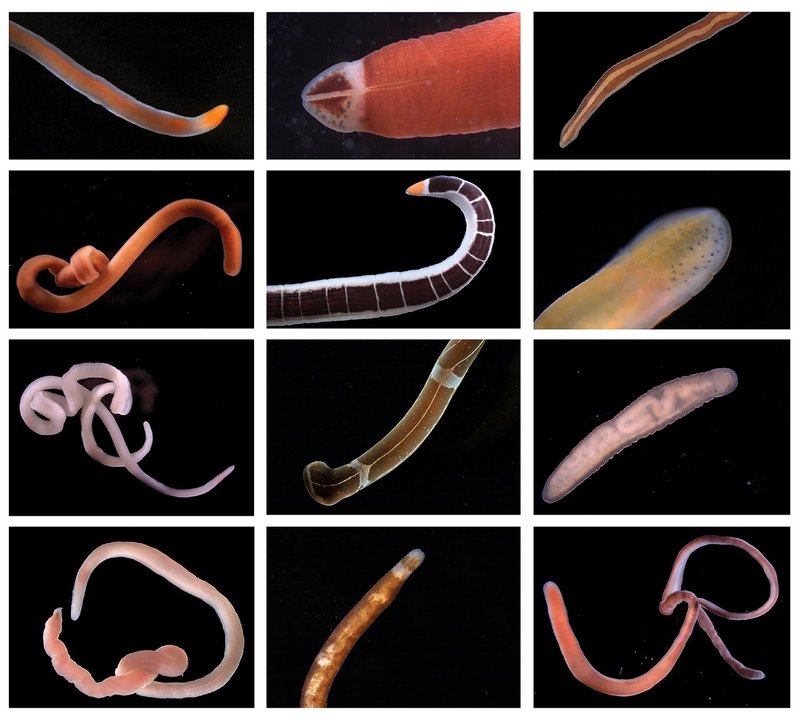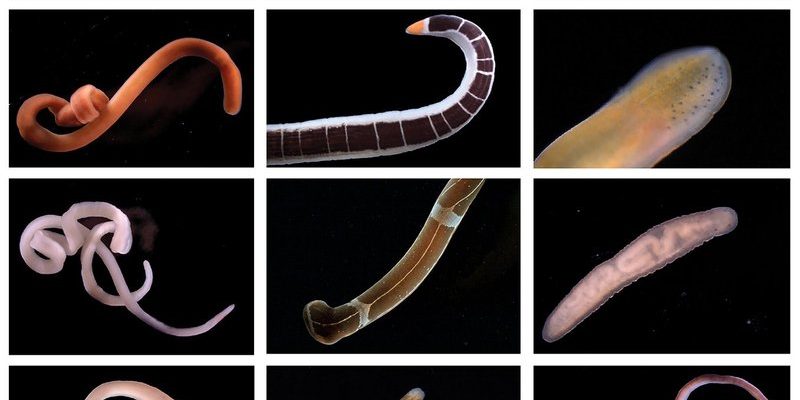
Imagine walking along a beach and spotting these slippery, colorful creatures wriggling in the tide pools. Ribbon worms are not just eye-catching; they play essential roles in their ecosystems, from serving as predators in the food chain to being prey themselves. Let’s dive deeper into the world of ribbon worms, exploring the color variations across different species and understanding what these colors mean in terms of survival and adaptation.
What Are Ribbon Worms?
Ribbon worms, or *Nemertea*, are long, slender invertebrates found in oceans worldwide. Ranging from a few centimeters to several meters in length, these worms exhibit a fascinating array of colors, including vibrant reds, blues, greens, and even yellows. Their body structure resembles a soft, flexible tube, making them easy to mistake for other creatures.
Here’s the thing: the colors of ribbon worms aren’t just for decoration. They often serve a purpose, such as camouflage, warning predators, or attracting mates. Think of it like a bustling marketplace, where the brightest stalls catch your attention while the others blend into the background.
While there are over a thousand species of ribbon worms, each species boasts its unique color palette. This diversity allows researchers to identify and categorize them based on their appearance, making color a significant factor in understanding ribbon worm biodiversity.
Color Variations and Their Significance
The vibrant colors of ribbon worms can be attributed to various factors, including their habitat, diet, and the presence of certain pigments. For instance, some species may have developed bright colors as a defense mechanism to warn predators of their toxicity. Others might use earthy tones to blend in with their surroundings, providing a stealthy advantage while hunting or escaping danger.
In many cases, the hues can also indicate a ribbon worm’s health and vitality. A brightly colored worm is often a sign of a healthy individual. On the other hand, duller colors may suggest stress or sickness. This variation gives scientists insights into the health of marine ecosystems, as studying these colors can provide clues about the overall environmental conditions.
So, when you spot a ribbon worm, remember there’s a whole story behind its colors. Each shade communicates something vital about its life and environment.
Common Color Patterns in Ribbon Worms
When you start looking into ribbon worms, one thing becomes clear: their colors are as varied as the seas they inhabit. Here are some common color patterns you might encounter:
- Bright Colors: Species like *Lineus longissimus* sport striking colors like bright red or orange, often warning potential predators of their unpalatable taste.
- Striped Patterns: Some worms have bold stripes or spots, which can help them blend into the sandy ocean floor or coral reefs, making them less visible to both predators and prey.
- Muted Tones: Others might showcase softer hues, like browns or greens. These colors often help them camouflage in rocky or algae-rich environments.
- Color Change: Interestingly, some ribbon worms can change color in response to environmental stimuli, which may help them adapt to their surroundings or communicate with others.
These patterns are not just for show; they are crucial for survival. It’s like wearing the right outfit for a specific occasion—whether it’s to stand out or to blend in.
Species Spotlight: Color Variations in Specific Ribbon Worms
Let’s take a closer look at a few ribbon worm species and their unique colors. Each one contributes a different chapter to the colorful story of ribbon worms:
*Lineus longissimus*
This species is known for its impressive length, often exceeding three meters. It has a captivating bright orange hue that serves as a warning to predators. The coloration indicates that it may be toxic, discouraging other creatures from taking a bite.
*Cerebratulus sp.*
Cerebratulus species are often longer and can display a variety of color patterns, including vibrant yellows and greens. These colors help them blend into their algal surroundings, allowing them to ambush unsuspecting prey.
*Amphiporus sp.*
Known for their striking black and white stripes, Amphiporus ribbon worms are not just visually stunning. The striking contrast provides effective camouflage against the shadows cast by rocks and coral, where they often reside.
Each species showcases how ribbon worms have adapted to their environments through color variations. Isn’t nature fascinating?
Environmental Influences on Color
Color in ribbon worms doesn’t just pop up at random; it’s influenced by various environmental factors. Water temperature, salinity, and even the availability of food can alter a ribbon worm’s appearance. For example, warmer waters may lead to more vibrant colors compared to cooler habitats.
Additionally, the presence of certain algae or sediments can affect how a ribbon worm appears. If they live in a colorful, algae-rich area, their bodies may adapt over time to match the available hues, giving them better camouflage.
It’s sort of like being part of a chameleon convention—these worms are in a constant state of adapting to their surroundings.
Color variations in ribbon worms are more than just an eye-catching feature; they tell us profound stories about survival, adaptation, and the interconnectedness of marine ecosystems. Whether they’re bright and bold or muted and camouflaged, each color has a purpose, helping these remarkable creatures navigate their underwater world.
The next time you find yourself by the sea, take a moment to appreciate the ribbon worms and their vibrant colors. They might just surprise you with their beauty and complexity. And who knows? You might even start to see the ocean in an entirely different way—one that’s bursting with colors and stories waiting to be discovered.

